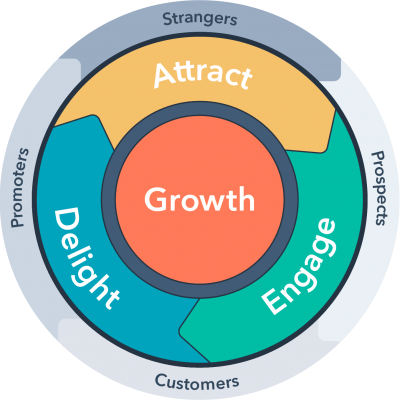How Does It Work?
The amount of energy or momentum your flywheel produces, as we described above, depends on three things:
- How Fast You Spin It
- How Much Friction There Is
- How Big It Is
The most competitive businesses would adapt their strategies to address these three. Your flywheel speed increases by applying energy to areas with the largest effect. Forces are technologies and techniques that you put in order to drive the flywheel. For example, inbound marketing, frictionless selling, a customer referral program, paid to advertise, and investing in your customer service team are all forces. They are most inclined to communicate their performance to future clients by reflecting on how you can keep your consumers successful.
If you're adding force to your flywheel, you just need to make sure there's nothing preventing it - that means extracting pressure from your plan. Friction is whatever slows down the flywheel.
For example, poor internal processes, lack of communication between teams, or misalignment between your customers and your employees. By looking at how the departments are organized, why consumers are churning, and when prospects get lost in the purchaser's path you can reduce friction.
Are all of the staff aligned, or are they in silos? Is your pricing simple, or is it cluttered with complicated fees? Do you encourage prospects to interact with you when, where, and where they choose or are they compelled to obey your stringent process? The more acceleration you increase and friction decrease, the more promoters you build for your company. And all those proponents are turning into a power that spins the flywheel.
When using inbound marketing as a guide, the flywheel's three phases are,
You will have an amazing consumer service by adding power to all three processes.
In the attracting process, for example, you draw visitors with helpful content and reduce obstacles when they attempt to learn about your business. The trick is to earn attention, not demand it, from people. Content promotion, search engine optimization, social media marketing, social sale, tailored digital ads, and conversion rate optimization are several powers you may implement.
You make shopping and ordering from you simple in the interaction process by encouraging customers to engage with you on their favorite timeline and platforms. Concentrate on opening partnerships and not just ending agreements. Such capabilities include website and email optimization, domain segmentation, marketing automation, lead nurturing, multichannel contact (chat, phone, texting, and email), sales automation, lead tracking, and trial before you order services.
And now, you assist, encourage, and inspire clients to achieve their goals in the delight phase. Know that success is consumer success. Self-help (knowledge base, chatbot), responsive customer support, multichannel connectivity (chat, texting, web, email), ticketing services, automatic onboarding, customer engagement polls, and loyalty schemes are some of the powers you can exploit.

